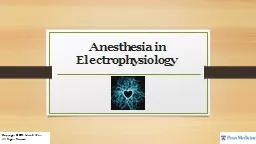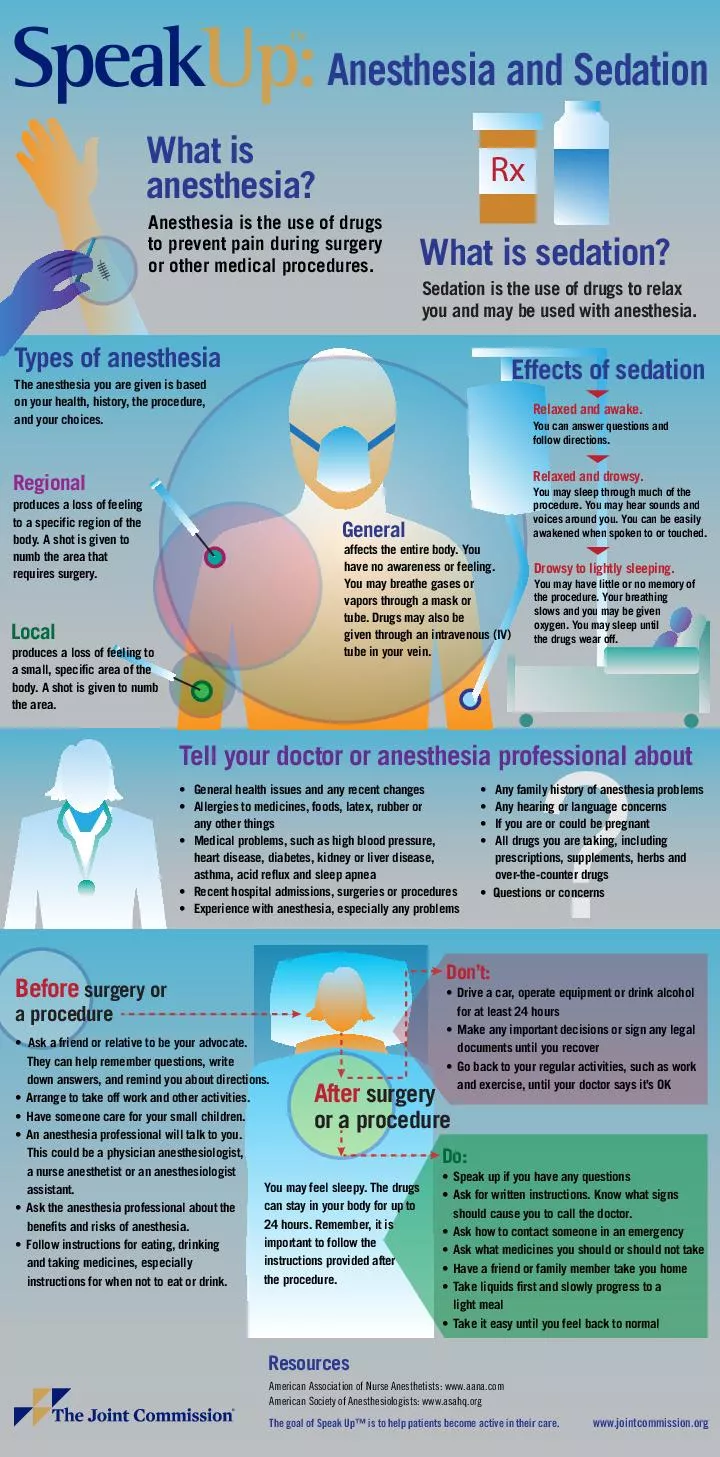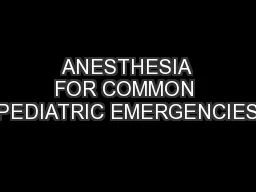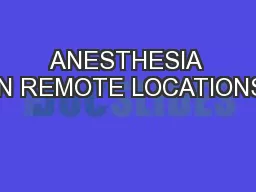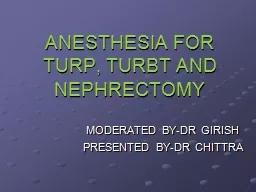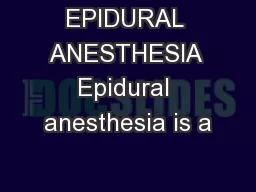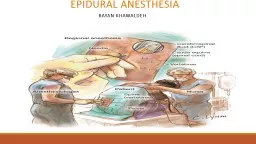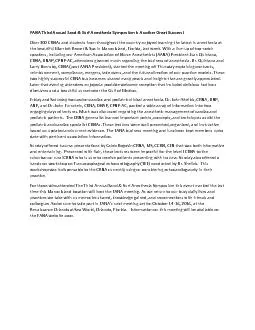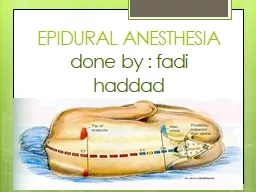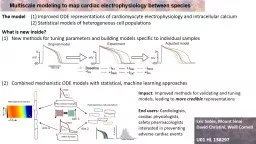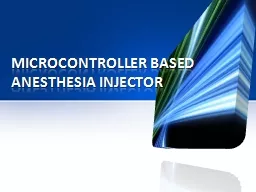PPT-Anesthesia in Electrophysiology
Author : pamella-moone | Published Date : 2020-04-04
Copyright 2015 Mark S Weiss All R ights Reserved The role of anesthesia in the EP lab EP labs were originally developed for diagnostic procedures EP lab are now
Presentation Embed Code
Download Presentation
Download Presentation The PPT/PDF document " Anesthesia in Electrophysiology" is the property of its rightful owner. Permission is granted to download and print the materials on this website for personal, non-commercial use only, and to display it on your personal computer provided you do not modify the materials and that you retain all copyright notices contained in the materials. By downloading content from our website, you accept the terms of this agreement.
Anesthesia in Electrophysiology: Transcript
Download Rules Of Document
" Anesthesia in Electrophysiology"The content belongs to its owner. You may download and print it for personal use, without modification, and keep all copyright notices. By downloading, you agree to these terms.
Related Documents

